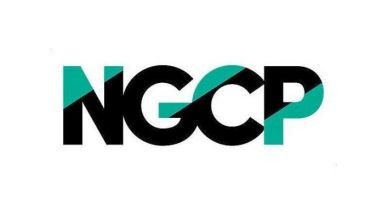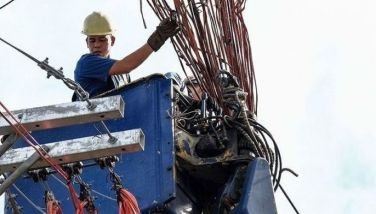What to expect in 2018 for the economy

At this time of the year, many are wondering what 2018 holds for the Philippine economy.
There are events we cannot control. Natural catastrophes like earthquakes, tsunamis, and typhoons could be very disastrous when they strike. Also, no one can tell what President Donald Trump and Kim Jong-un of North Korea might do with their nuclear buttons.
What happened in 2017. What happened this year foretells to some extent what the next year brings.
They are positive signs.
First, economic growth has been good. Estimates indicate that in the first half, the GDP grew (year-on-year) by 6.5 percent. In the second half, judging from the year-on-year growth of 6.9 percent for the third quarter, overall growth for the year could be within the range of these growth rates.
This growth performance is one of the best in East Asia this year. Recent worries about overheating implies that there is a lot of productive activity pushing the economy forward. So far, the economy’s growth is under sound macroeconomic control.
A second major accomplishment of the government is the passage of the tax reform law, the main economic legislative feat for the year.
The tax reform law undertakes a major revision of the tax system and – more important – produces more revenue potentials to empower the government for development.
The tax reform. Success in passing the tax reform –TRAIN (Tax Reform for Acceleration and Inclusion) – does wonders for the future growth of the economy.
A tax redistributes purchasing power from the general public or specific sectors in favor of spending that is preferred by economic policy. This could be in the form of investment in infrastructure or of activities that satisfy certain public demands that are in the nature of consumption. It creates new economic directions that raise and redistributes output in the economy.
In short, the increase in revenues brings in more consumption and investment expenditures that the government favors as part of the development program. The tax reform adds additional capacity that strengthens the financing of important projects.
It is an assurance that critical infrastructure projects, especially transportation sector backlogs, have the financial backing to make the government implement their construction. In anticipation, the government has already approved many infrastructure projects for implementation, most of them in transportation, ports, irrigation and in communication.
The 2017 tax reform law, however, falls short of its original revenue objectives. It has been unable to correct the loopholes and deficiencies of the current tax system. However, it still achieves an increase in the capacity to raise revenues. It also reduces the personal income tax to alleviate the burden of the tax on middle income families as a result of long term effects of price inflation on nominal income.
The tax reform law raises the overall fiscal capacity to finance public investments. The current tax to GDP ratio according to the Philippine development plan is around 14 percent. With this tax reform, it will push upward toward 15 percent (still below the ambitious plan of raising it to 17 percent).
Positive expectations. More powerful positive sentiments accompany success in passing difficult legislation on taxation. Major institutions analyzing and assessing Philippine development are encouraged by this action.
The tax reform has the consequence of changing or affirming evaluations of the development effort. In this context, the assessment of multilateral development institutions is critical.
The World Bank is the lead institution in this regard. The World Bank has sustained essentially its high growth expectations for the Philippine economy. The IMF and the ADB followed suit, and with all these, the positive judgments also of the international development community. All local projections of growth rates are simply echoes in the chorus.
The circle of affirmation is not necessarily interdependent. The independent assessments of the sovereign credit ratings companies also provide important weather vanes from the viewpoint of the international financial market.
Only last week, Fitch improved the country’s sovereign credit rating. It raised its investment grade rating for the Philippines from “BBB-”to “BBB, stable outlook,” noting the country’s recent strong growth of 6.9 percent per year is “underpinned by sound policies that are supporting high and sustainable growth.”
Moody’s rating, given in June this year is already investment grade, at “Baa2 (stable).” S&P, the major rating company, has already made a favorable rating which is above investment grade in September 2016. This was a two-year rating horizon. In all likelihood, the sovereign credit ratings could only improve if the balance of payments remained in sound position.
Big problems remain. Even if prospects next year are better, big problems will continue to dominate the country’s development efforts. Year-in-year-out, it is a fight to conquer these problems.
The investment program might be directed at removing bottlenecks and extending infrastructure, but the big hurdles will be there to challenge the country. Important policies need to be changed. Structural policies pertaining to foreign direct investments need to be made. But those remain in the constitutional arena.
Poverty and unemployment are the biggest of these challenges. There are many deficiencies of employment and labor market policies, but the government is unable to make headway to change the defects.
Anyway, with high economic growth, increases in incomes and the rise of domestic employment could be expected to create some new employment in the growing sectors.
The country, however, is much better off operating in a state of high growth than one that is racked by crisis and poor economic resources to back it up.
My email is: [email protected]. Visit this site for more information, feedback and commentary: http://econ.upd.edu.ph/gpsicat/
- Latest
- Trending
























